Ctek M100 Bruksanvisning
Ctek
Batteriladdare
M100
Läs gratis den bruksanvisning för Ctek M100 (1 sidor) i kategorin Batteriladdare. Guiden har ansetts hjälpsam av 12 personer och har ett genomsnittsbetyg på 4.7 stjärnor baserat på 6.5 recensioner. Har du en fråga om Ctek M100 eller vill du ställa frågor till andra användare av produkten? Ställ en fråga
Sida 1/1

M100
Battery charger
For lead-acid batteries 14–225Ah
User Manual and guide to
professional battery charging for
Starter and Deep Cycle batteries.
Model 1007
EN
INTRODUCTION
Congratulations on your purchase of your new professional M100 Switch Mode Charger with
Pulse Maintenance, Float, Analysis and Recond. M100 is a member of a family of professional
chargers from CTEK SWEDEN AB. It represents the state-of-the-art technology for battery
charging. A M100 will prolong the lifetime of your battery. Read this user manual and follow the
instructions carefully before using the charger.
SAFETY
• The charger is designed for lead-acid batteries from 14–225Ah. Do not use the charger for
any other purpose
• Use safety glasses and turn your head away when connecting or disconnecting a battery.
• Battery acid is corrosive. Rinse immediately with water if acid comes into contact with skin or
eyes. Seek medical advice.
• Make sure that the cable is not pinched or in contact with warm surfaces or sharp edges.
• While charging, a battery can emit explosive gases, so it is important to avoid sparks in the
immediate area.
• Always provide for proper ventilation during charging.
• Avoid covering the charger.
• Make sure that the electrical cable does not come into contact with water.
• Never charge a frozen battery.
• Never charge a damaged battery.
• Do not place the charger on the battery while charging.
• The electrical connection must fulfil the national heavy current requirements.
• Check charger cabling before use. Make sure there are no cracks in the cabling or in the
protective covering. A charger with damaged cables may not be used.
• Always check that the charger has gone over to maintenance charging mode before leaving
the charger unattended and connected for long periods. If the charger had not gone over
to maintenance charging within 3 days, this is an indication of a problem. In this case the
charger must be disconnected manually.
• All batteries fail sooner or later. A battery that fails during charging is normally taken care of
by the chargers advanced control, but certain uncommon errors in the battery can still arise.
Don’t leave the battery charger unattended for a longer period of time.
• Only mount the charger on a flat surface.
• This equipment may not be used by children or by those who can not read and understand
the manual if they are not supervised by a responsible person who can guarantee that the
battery charger is being used in a safe manner. Store and use the battery charger out of the
reach of children. Make sure that children do not play with the battery charger.
BATTERY TYPES AND SETTINGS
M100 can easily be configured to charge many different types of 12V lead-acid batteries; wet
batteries, MF, AGM and for most GEL-batteries.
The following recommendations should, however, only be seen as guidelines. When in doubt,
always consult the battery manufacturer for further instructions.
Settings are made by pressing the “MODE-button” and stepping forward by pressing the button
one step at a time, releasing the button when the required mode is reached. After approx. 2
seconds, the charger activates the chosen mode. The selected mode is saved in the charger’s
memory and remains even when the charger is switched off.
MODE
”NORMAL” (14.4V)
Normal setting for wet batteries, MF and for most Gel batteries.
Mode ”AGM” (14.7V)
This setting is recommended for batteries at temperatures below 5°C. It is also recommended
for many AGM batteries. This setting is not recommended for maintenance charging when the
temperature at times exceeds +5°C. In this case, the NORMAL mode is recommended.
Mode ”SUPPLY” (13.6V)
In this mode, the charger provides a constant voltage of 13.6V. This is the best maintenance
mode for batteries where maximum capacity is important. It is not appropriate to charge a
completely discharged battery in Supply mode, since this will not result in a completely charged
battery. The M100 can also be used as a power supply without a battery attached in this setting.
No counter voltage is required to start the charger in this mode. Note that the charger is not
spark free in this mode.
Mode ”RECOND” (15.7V, 1.5A 0.5– 4h)
This mode is used to recondition very discharged batteries where you could expect a stratified
acid (high acid weight in the bottom, low on top). Use this mode with care because it can cause
some water loss. 15.7V is normally not a problem for electronics, but consult the manufacturer
when in doubt. Life of light bulbs can be reduced by higher voltages. Try to avoid using 12V
lamps connected to the battery during this phase. Maximum effect and minimum risk for
electronics is achieved by disconnecting the battery before charging.
CHARGING
Charging batteries mounted in a vehicle:
1. The power cord should be disconnected before connecting or disconnecting the battery
leads.
2. Identify the pole that is grounded (attached to the chassis). Ground is normally connected to
the negative terminal.
3. Charging a negatively grounded battery. Connect the red cable to the positive pole of the
battery and the black cable to the vehicle’s chassis. Be careful not to connect the black cable in
the vicinity of a fuel pipe or the battery.
4. Charging a positively grounded battery. Connect the black cable to the negative pole of the
battery and the red cable to the vehicle's chassis. Be careful not to connect the red cable in the
vicinity of a fuel pipe or the battery.
Charging of a battery not connected to a vehicle:
1. The power cord should be disconnected before connecting or disconnecting the battery
leads.
2. Connect the red cable to the positive pole of the battery and the black cable to the negative
pole.
Connecting the provided cables with eyelet terminals:
Make sure that the cable is not pinched or in contact with warm surfaces or sharp edges. When
the cable is mounted on the battery, it should not be connected to the charger. Connect the
eyelet terminals to the battery's poles - the red cable to the positive pole and the black cable to
the negative pole. After this, the quick connector can be connected.
Reverse Polarity Protection
If the battery cables are connected incorrectly, the reverse polarity protection will make sure
that neither the charger nor the battery are damaged. In this case, the red warning lamp (0) will
be lit.
Start charging
1. Connect the power cord to the power outlet.
2. Set the proper charging mode for the battery by pushing the Mode button until the correct
setting is lit. Choosing settings for your battery is described under ”BATTERY TYPES AND
SETTINGS”.
3. The lamp for Deep Discharged battery (1) will indicate if the battery voltage is low. If lamp
1 blinks, this indicates that the battery is lightly sulphated. Read more under ”CHARGING
PHASES”
4. Normal charging is indicated by the following lamps: Deep Discharged (1), Bulk Charge (2),
Absorption Charge (3) or Maintenance Charging (4). When the maintenance lamp is lit, the bat-
tery is fully charged. The charge will restart if the voltage drops. The charger can be connected
for months.
SUPPLY or RECOND are indicated when the lamps for these settings are lit (5 or 6).
5. If the battery cables are connected incorrectly, the reverse polarity protection will make sure
that neither the charger nor the battery are damaged. In this case, the red warning lamp (0) will
be lit.
6. If nothing happens. If the setting lamp is lit but no other light comes on, the connection to
the battery or to the chassis may be poor, or the battery may be faulty. Start by improving the
contact between the battery and the charger.
7. Charging can be interrupted at any time by disconnecting the power cord from the wall
socket or by putting the charger in "Standby" mode (lamp A). Always disconnect the power cord
from the socket before removing the battery cables. When you interrupt charging of a battery
mounted in a vehicle, always disconnect the battery cable from the chassis before removing the
other battery cable.
CHARGING PHASES
Mode chosen: ”NORMAL” or ”AGM”
M100 is a multi stage fully automatic charger. Lamp B for chosen setting ”NORMAL” and lamp C
for chosen setting ”AGM”.
Desulphation (Lamp 1, blinking)
Desulphation with pulsing for sulphated batteries. Indicated by blinking lamp 1.
Start (Lamp 1)
Starting phase for charging. The starting phase continues until the battery’s terminal voltage
has risen over a preset level. At this point, charging goes into the bulk phase. If the terminal
voltage has not reached the preset level within 8 hours, charging is suspended. The error mode
is indicated. This indicates a battery which is faulty or has too large capacity. If a large battery
is charged that has been severely discharged, it may be necessary to restart the charger after 8
hours. Start is indicated by lamp 1.
Bulk (Lamp 2)
Primary charging where approximately 80% of the charging happens. The charger delivers
maximum voltage until the terminal voltage has risen to the preset level. After a number of
hours, the charger goes on to the next phase, even if maximum voltage is not reached. Bulk is
indicated by lamp 2.
Absorption (Lamp 3)
Final charging, voltage is kept at the preset level. During this phase, the voltage is gradually
reduced. If the maximum length of time for Absorption is exceeded, the charger automatically
continues with Analysis. Absorption is indicated by lamp 3.
Analysis (Lamp 3)
Charging is suspended for a short period and the battery voltage measured. If it falls too
quickly, the battery is probably faulty. Charging is suspended and an error is indicated (lamp 0).
Maintenance charging - float (Lamp 4)
During the first 10 days of maintenance charging the battery is maintained with constant volt-
age, 13.6V. Float-maintenance is indicated by lamp 4.
Maintenance charging - pulse (Lamp 4)
The state of charge varies between 95% and 100%. The battery receives a pulse when the
voltage sinks, keeping the battery in good shape when it is not being used. The charger can be
connected for months at a time.
If the battery is charged and/or the battery’s terminal voltage drops, the charger starts a charge
pulse until the voltage has reached the preset level, 14.4V or 14.7V. The charge pulse is then
interrupted and the cycle is repeated as long as the charger is in pulse maintenance phase. If
the terminal voltage drops even lower, the charger automatically reverts to the beginning of the
charging curve. Pulse maintenance phase is indicated by lamp 4. If possible, check the water
level in the battery.
Chosen mode: ”SUPPLY”
M100 has a Supply mode setting which has a constant voltage of 13.6V and current up to 7A.
This mode can also be used for maintenance charging of an already fully charged battery,
called Float maintenance. This type of charging keeps the battery at 100% charge. The con-
stant small overcharge can also increase water loss. A battery does not have to be connected
for the charger to deliver voltage. This means that the spark protection is not active in this
mode. It is not appropriate to charge a completely discharged battery in Supply mode, since
this will not result in a completely charged battery. In this mode, M100 can also be used as a
power generation unit for operating equipment that requires 13.6V and a maximum of 7A. If the
selected current exceeds 7A, the output voltage will drop as the load increases. The charger
has electronic overload protection in this mode, which is activated if the charge is so great that
the output voltage from the charger falls below around 9V and the current ís around 7A. In the
event of an overload, the charger goes into error mode (lamp 0). Supply mode is indicated with
lamp D and lamp 5.
Chosen mode: ”RECOND”
M100 has a Recond mode which is used to recondition a battery that has been severely
discharged. The battery is first charged using the mode ”NORMAL”. When the analysis phase is
complete, the charger begins reconditioning the battery by providing a constant current of 1.5A
and a maximum voltage of 15.7V. After 0.5– 4 hours, the battery is completely reconditioned
and the charger goes into pulse maintenance. The battery is ready to be used, or store it with
pulse maintenance active until you are ready to use the battery. Recond is indicated by lamp
E and lamp 6. Note that the recond phase begins with normal charging and that the charger
therefore will indicate the charging phases according to the descriptions above first. Lamp 6 is
first lit when the reconditioning begins.
TEMPERATURE PROTECTION
M100 is protected from being overheated. The power will be reduced if the ambient temperature
is raised.
MAINTENANCE
The charger is maintenance free. Note that disassembly of the charger is not permitted and
will void the warranty. If the power cord is damaged, the charger must be left to the reseller for
maintenance. The case can be cleaned with a soft damp cloth and mild cleanser. The charger
should be disconnected from the power supply while cleaning.
EQUIPMENT
M100 is delivered with a set of battery cables with battery pole clamps and a set of battery
cables with eyelet terminals.
WARRANTY
CTEK SWEDEN AB, Rostugnsvägen 3, 776 70 VIKMANSHYTTAN, SWEDEN provides a lim-
ited warranty to the original purchaser of this product. This limited warranty is not transferable.
The unit is warranted against defective workmanship or materials for 5 years from the date of
purchase. The customer must return the product together with the original purchase receipt to
the place of purchase. This warranty is void if the unit is handled carelessly, opened or repaired
by anyone other than CTEK SWEDEN AB or its authorized representative. CTEK SWEDEN AB
makes no warranty other than this limited warranty and expressly excludes any implied warranty
including any warranty for consequential damages. This is the only expressed limited warranty
and CTEK SWEDEN AB neither assumes nor authorizes anyone to assume or make any other
obligation towards the product other than his limited warranty.
TECHNICAL SPECIFICATION
Model 1007
Voltage AC 220–240VAC, 50– 60Hz
Back current drain* < 1mA
Voltage Charging Voltage Nominal: 12V
13.6V; 14.4V; 14.7V or 15.7V
Ripple** Max 150mV rms, max 0.3 A (=4%)
Current 7A max
Ambient Temperature -20°C to +50°C, power is reduced automatically at
increased ambient temperature.
Cooling Natural convection.
Charging cycle M100 is a multi stage fully automatic charger
Type of batteries All types of 12 V lead-acid batteries (Wet, MF, AGM and GEL).
Battery Capacity 14–225Ah
Dimensions 191 x 89 x 48 mm (L x W x H)
Insulation IP65
Weight 0.8kg
*) Back Current Drain is what the charger uses to drain the battery if the power cord is
disconnected.
**) Quality of the current and voltage are very important. High current ripple heats up the
battery and makes the positive electrode age prematurely. High voltage ripple could harm other
equipment connected to the battery. M100 produces a high quality current and voltage with very
low ripple.
MANUFACTURER’S DECLARATION
CTEK SWEDEN AB, Rostugnsvägen 3, 776 70 VIKMANSHYTTAN, SWEDEN. Declares
under sole responsibility that the battery charger M45, to which this declaration relates is in
conformity with the following LVD standards: EN60335-1, EN60335 -2-29 according to the terms
of directive 2006/95/EC. This product also is in agreement with the following EMC standards:
EN55011, EN 61000-3-3, EN 61000-3-2, EN55014-1 and EN55014-2 according to the terms of
directive 2004/108/EC.
VIKMANSHYTTAN, SWEDEN 2008-12-12
Börje Maleus, VD
CTEK SWEDEN AB,
Rostugnsvägen 3
776 70 VIKMANSHYTTAN, SWEDEN
Fax: +46 225 30793
www.ctek.com
CHARGING TIME
The table shows the length of time for bulk charging.
Battery size (Ah) Time to ~80% charge (h)
20 3
60 8
100 12
225 25
INDICATIONS
Indication Description
0 Error mode, the charger suspends the charging / voltage maintenance. See further
description below.
1 Start mode.
2 Bulk charging, maximum voltage.
3 Absorption charging, voltage limited to chosen voltage.
4 Pulse maintenance charging
5 Supply mode, fixed output voltage, no counter voltage requirement.
6 Recond charging
A STANDBY
B Mode ”NORMAL” (14.4V)
C Mode ”AGM” (14.7V)
D Mode ”SUPPLY” (13.6V)
E Mode ”RECOND” (15.7V, 1.5A 0.5 –4h)
Error mode
The charger enters error mode before start in the following situations:
• The battery is connected with poles reversed to the charger's terminals.
• The terminals on the charger are short-circuited.
Error mode before start is reset by removing the error situation. The charger restarts in the
latest selected mode.
The charger enters steady error mode in the following situations:
• The charger’s analysis function has interrupted charging.
• The charger is overloaded in Supply mode.
• The charger has been in start mode longer than maximum time.
Steady error mode is acknowledged/reset by pressing the ”MODE” button. The charger restarts
in the latest selected mode.
20013258A
20013258A M100 Manual EU Print 001 indd 1 2011 06 20 10:50:31
Produktspecifikationer
| Varumärke: | Ctek |
| Kategori: | Batteriladdare |
| Modell: | M100 |
| Enhetsplacering: | Vrijstaand |
| Färg på produkten: | Wit |
| Dörrgångjärn: | Boven |
| Inbyggd display: | Ja |
| Vikt: | 58000 g |
| Bredd: | 400 mm |
| Djup: | 600 mm |
| Höjd: | 900 mm |
| Nettoskatt: | 2000 W |
| Typ av laddare: | Bovenbelading |
| Sladdlängd: | 1.2 m |
| Fördröjd starttimer: | Nee |
| Förpackningens vikt: | 60000 g |
| Förpackningens bredd: | 450 mm |
| Djuppackning: | 700 mm |
| Förpackningshöjd: | 940 mm |
| Energieffektivitetsklass (gammal): | A+++ |
| Tvätt energiförbrukning: | - kWu |
| Årlig tvättenergiförbrukning: | 137 kWu |
| Centrifuger läkemedelsklass: | A |
| Ljudnivå (tvätt): | 51 dB |
| Maximal centrifugeringshastighet: | 1200 RPM |
| Nuvarande: | 10 A |
| Torkkapacitet: | 6 kg |
| Ljudnivå (torkning): | 72 dB |
| Årlig tvättvattenförbrukning: | 8800 l |
| Energianvändning vid tvätt och torkning: | - kWu |
| Vattenförbrukning tvätt & torkning: | - l |
| Tvättvattenförbrukning: | - l |
| Belysning i trumma: | Nee |
| Nominell kapacitet (tvätt): | 6 kg |
Behöver du hjälp?
Om du behöver hjälp med Ctek M100 ställ en fråga nedan och andra användare kommer att svara dig
Batteriladdare Ctek Manualer

22 September 2024

12 September 2024

12 September 2024

12 September 2024

11 September 2024

11 September 2024

11 September 2024

11 September 2024

11 September 2024

11 September 2024
Batteriladdare Manualer
- APSystems
- Digitus
- Pioneer
- Accele
- Akyga
- Lab 31
- Technisat
- Tesla
- Toolcraft
- Batavia
- Hager
- Fronius
- Loadchamp
- Cellular Line
- Metabo
Nyaste Batteriladdare Manualer
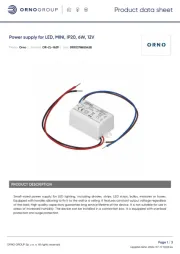
15 Oktober 2025
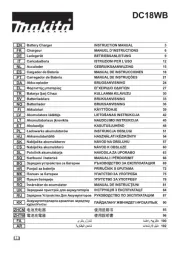
12 Oktober 2025
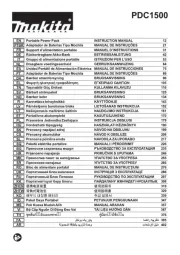
12 Oktober 2025

12 Oktober 2025

12 Oktober 2025
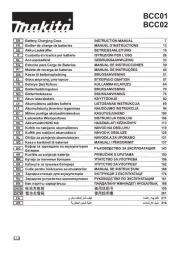
12 Oktober 2025
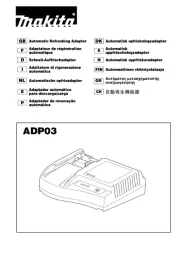
9 Oktober 2025
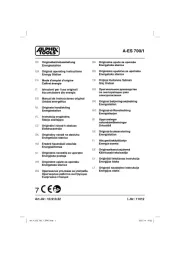
5 Oktober 2025
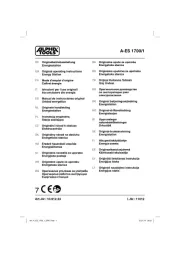
5 Oktober 2025
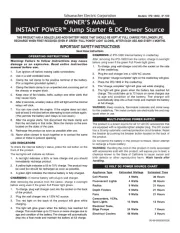
3 Oktober 2025